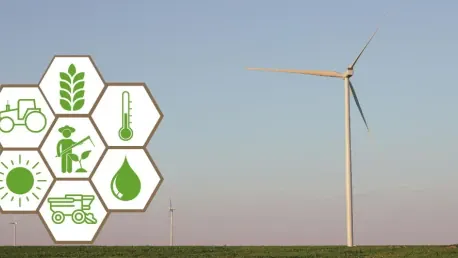Imagine a world where our energy needs are met without depleting finite resources or accelerating climate change. Bioenergy, a form of renewable energy derived from organic materials, offers a promising answer to this demand. By tapping into natural processes, bioenergy can help reduce carbon emissions, meet long-term sustainability goals, and create a cleaner environment.
What is Bioenergy?
Bioenergy is generated by burning biomass fuels, which come from organic materials like harvest residues, purpose-grown crops, and organic waste. These materials undergo various processes to convert them into usable forms of energy, such as solid fuel, liquid fuel, biogas, or biomethane. Through this transformation, bioenergy serves as a versatile and renewable energy source that can be integrated into existing energy systems.
The Importance of Bioenergy
Bioenergy stands out as a low-carbon, renewable alternative to fossil fuels, playing a crucial role in reducing carbon emissions and mitigating climate change. It is particularly significant in sectors where other renewable energy options are limited, such as in aviation, maritime, and heavy land transport. Additionally, bioenergy technology holds potential for carbon capture and storage, enhancing its contribution to climate-friendly energy systems.
Sustainability and Climate Impact
The sustainable production of bioenergy is essential to ensure it effectively reduces greenhouse gas emissions. Ensuring proper sourcing and processing of biomass is critical; otherwise, it can pose risks to the climate. The carbon dioxide released during the burning of biomass is typically offset by the CO₂ absorbed by new plants during their growth, making bioenergy a near-neutral carbon process when managed sustainably.
Improved Waste and Forest Management
Bioenergy also plays a significant role in improving the management of organic waste and forests. Utilizing animal manure and organic waste not only serves environmental purposes but also improves water quality and reduces the need for artificial fertilizers. Sustainable biomass fuel markets encourage better forest management and promote afforestation, creating healthier ecosystems and increasing biodiversity.
Sources of Biomass Fuel
Biomass can be sourced from a variety of materials including wood residues, farm waste, energy crops, and organic waste. Wood residues are the low-value parts obtained during forest management, while farm waste includes animal manure, straw, and leftovers from food production. Energy crops such as wheat, oilseed rape, willow, and miscanthus are grown specifically for bioenergy purposes. Organic waste, including food waste, used cooking oil, and wood by-products, provides additional sources of biomass fuel.
Types of Biomass Fuel
Bioenergy can take the form of solid fuel, liquid fuel, biogas, or biomethane. Solid fuel is often derived from wood pellets, wood chips, and other solid forms that are by-products of the wood industry. Liquid fuel is converted from energy crops into biofuels, categorized into first-generation (which competes with food production) and second-generation biofuels (which do not compete with food resources). Biogas and biomethane are produced through processes like anaerobic digestion, with biogas being upgraded to biomethane for use in heating, transportation, and electricity generation.
Trends and Consensus
There is a strong consensus that bioenergy is vital for transitioning to a low-carbon economy. The overarching trend emphasizes the need for sustainable bioenergy practices to ensure its benefits outweigh potential climate risks. It is crucial to improve existing waste and forest management systems to support bioenergy’s development, ensuring its positive impact on environmental sustainability.
Conclusion
Imagine a world where our energy needs are fulfilled without draining finite resources or exacerbating climate change. Bioenergy, a form of renewable energy derived from organic materials, presents a compelling solution to this environmental and energy challenge. Utilizing natural processes, bioenergy can significantly reduce carbon emissions and drive us toward long-term sustainability goals, ensuring a cleaner, greener environment for future generations. Bioenergy sources include various biomass materials like wood, agricultural residues, and even algae, all of which can be converted into energy through processes such as combustion, fermentation, and anaerobic digestion. Unlike fossil fuels, which emit large quantities of carbon dioxide, bioenergy systems are designed to capture and recycle carbon, maintaining a balanced carbon cycle. This form of energy not only mitigates the adverse effects of traditional energy sources on the climate but also promotes economic growth by creating new industries and job opportunities in the renewable energy sector. Embrace bioenergy for a sustainable future where energy needs and environmental stewardship go hand in hand.









